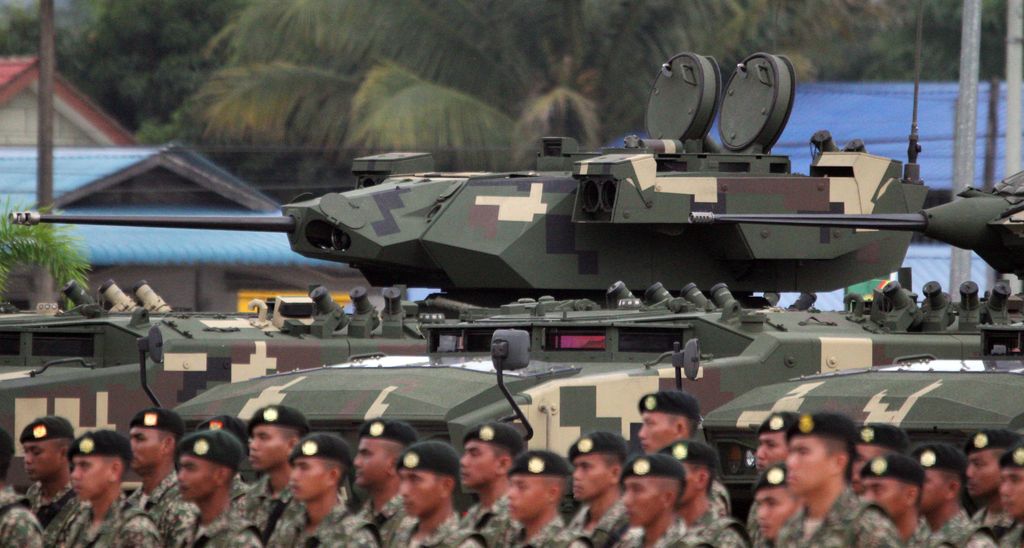
KUANTAN: Deliveries of the Deftech Gempita AFV to the Army is continuing after production problems were resolved. Army chief Gen Raja Affandi Raja Mohammed said since the difficulties had been resolved, more vehicles would come on line in the coming months.
He did not revealed the problems which caused the delay nor the numbers of Gempita already operational.
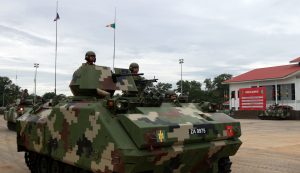
The second Army unit to operate the Gempita- 1st Kor Armor Di Raja – based here has received five of the AFV30 variant. The 19th Royal Malay Regiment, the first unit to operate the Gempita will soon have its full complement of IFV25 – the Bushmaster turret fitted with the 25mm gun – as well as the other variants including the AFV30 ATGW, ACV command and AV Signals variants.
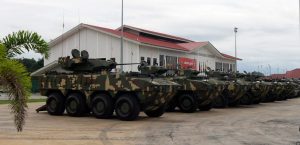
As delivery to Army units was continuing, Raja Affandi said it was time to move ahead with the plan to market the Gempita for foreign buyers.
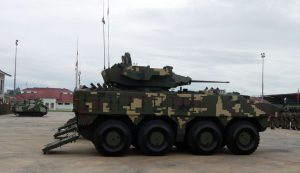
“We have several countries in particular. I believe we have a fair chance to sell them,” he told Malaysian Defence at the 12th (Mechanized) Royal Malay Regiment camp here. Raja Affandi who is take over as the chief of defence force later this month, was the guest of honour for the appreciation parade for retiring Lt. Gen. Shahrani Sany.
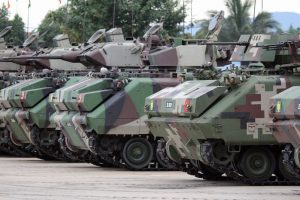
Shahrani was the Joint Force Command Commander prior to his retirement. As he was a former commander of the 4th Mechanized Brigade, the parade was held at the brigade grounds.

Adnans, KIFVs and Gempitas from units under the brigade also performed a drive past as part of the parade.
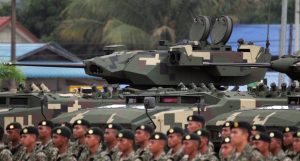
The Adnans are from the 12th RMR, KIFVs from 14th RMR while the Gempitas were all from the 19th RMR.
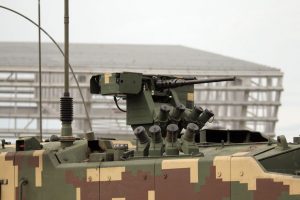
Making its public debut was the 19th RMR AFV30 ATGW vehicle together with the ACV Command and the ACV Signals vehicles together with five IFV25s.
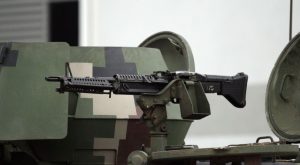
The five AFV30s from 1 Armor were parked in a dispersal shed just next to the parade ground. The unit did not take part in the parade as it is still transitioning to the Gempita from the Condors.

The budget shortfall due to the economic difficulties has also forced the Army to defer the deliveries of the Gempita, originally scheduled to be completed by 2020 to go beyond that.
— Malaysian Defence
If you like this post, buy me an espresso. Paypal Payment

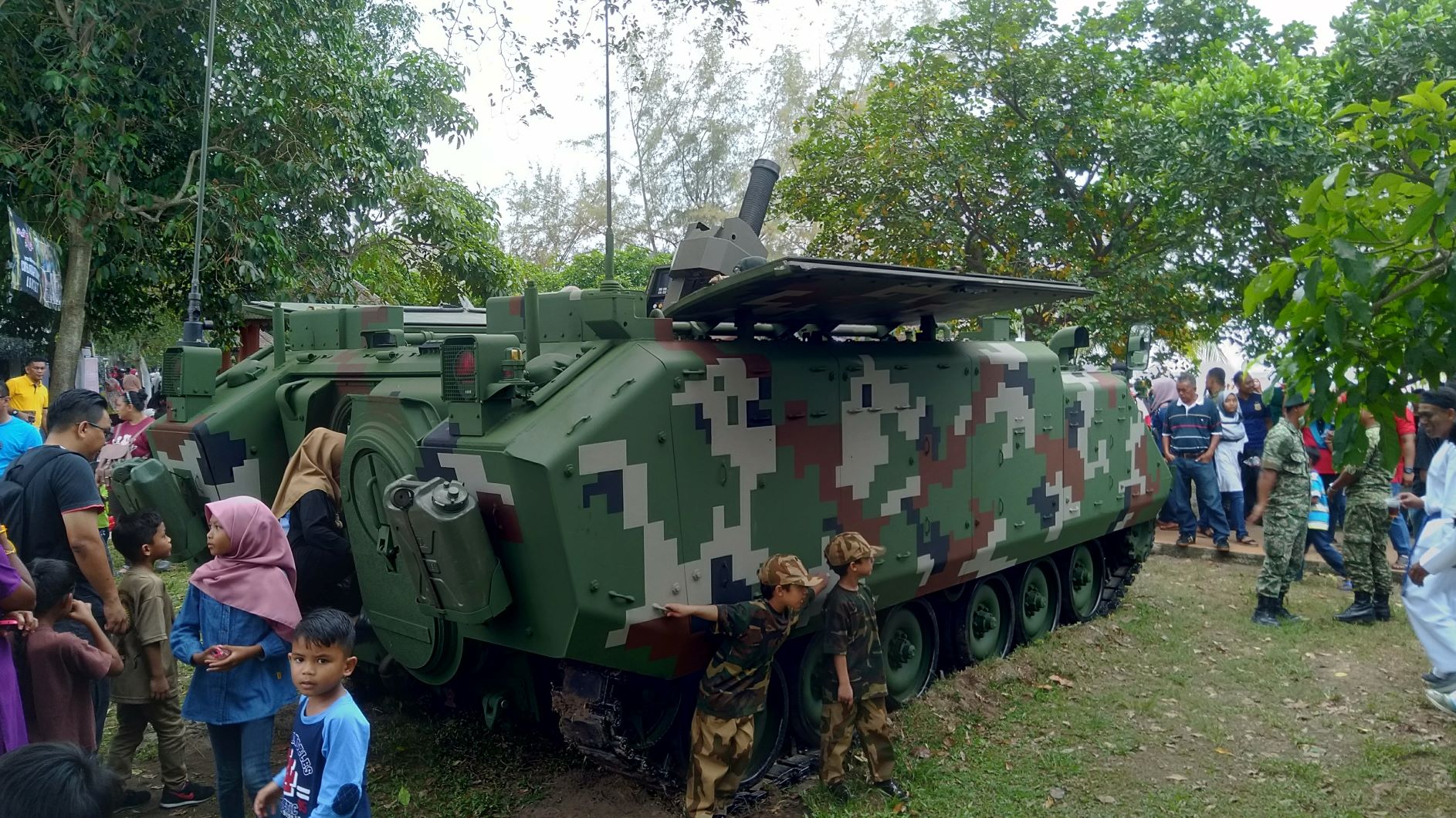

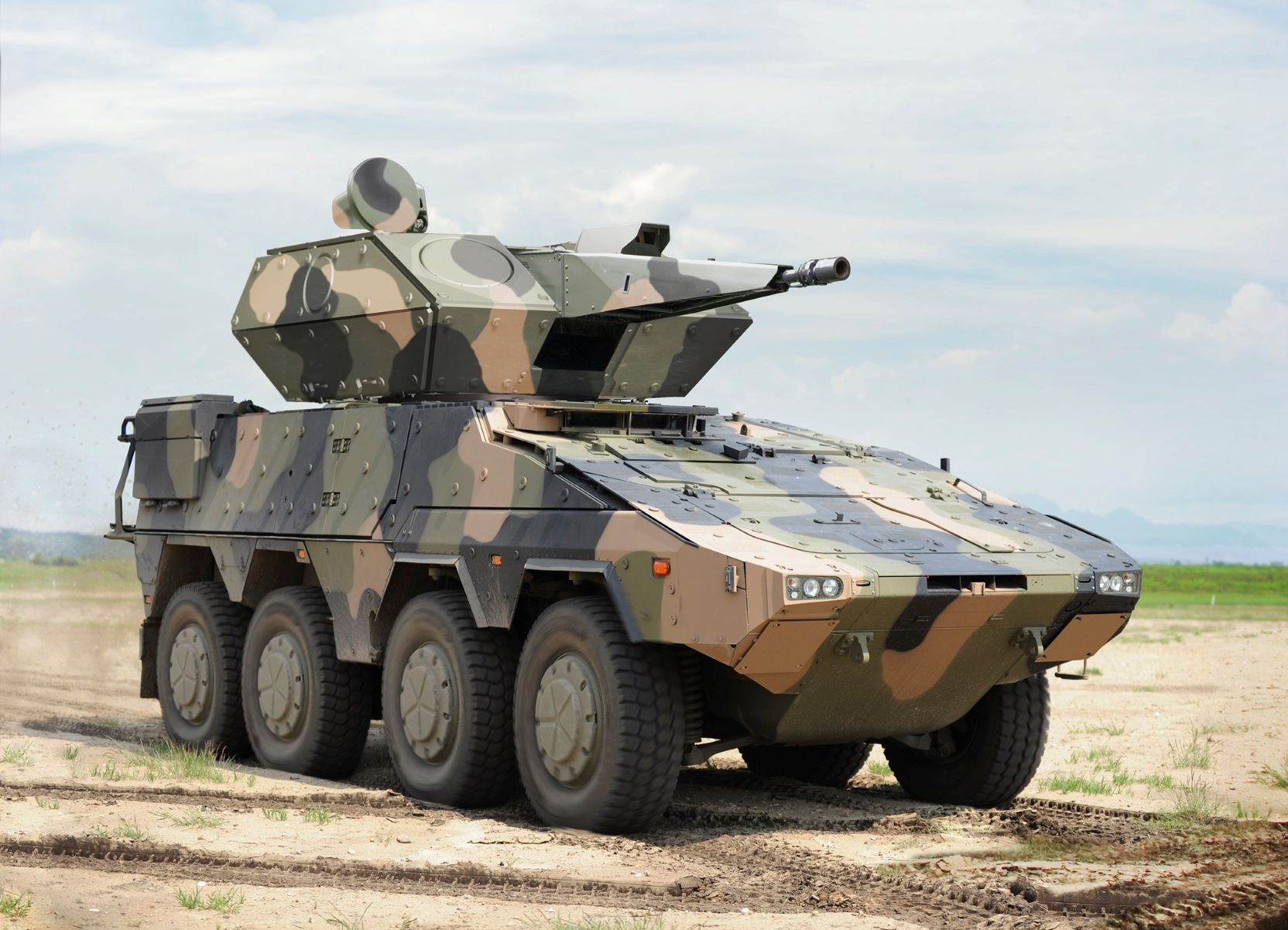
Can i know the missile of that ATGM version?
Reply
Ingwe
Other than brunei (and even that is a pretty long shot), I don’t see anyone wanted to buy Gempita
Not to discredit the platform (and Deftech), but Gempita is too heavy and too expensive. Lighter, cheaper platform like Doosan Black fox or Mowag Piranha (or its derivatives)
Reply
Possibilities..
Mech Brigade now have 4 Mech Battalions?
Reply
Yes for some time now
Is it me or the atgm version doesnt have frontal top armour?
Alex,
”Heavy” in comparison to what? Anything lighter and it will be less protected and not as well armed. The heaviest variants will be the 30mm armed one and the ones with Ingwe but that’s to be expected.
Also, the key word is actually not the weight but the ground pressure. Even if it’s found to be heavy in some of the rural areas it’s meant to operate in, that’s where the engineers come in. If anything the main drawback when operating in areas with low hanging vegetation will be its height not its weight but most wheeled IFVs on the market now are quite similar in size and height.
In their baseline variants the Piranha and Black Fox may be lighter than the AV-8 but if added with applique armour to protect up to 12.7mm the weight will increase. There is no getting around the fact that improving protection levels leads to extra weight. Designs like Boxer and the contender to replace Warrior will make the Adnan light in comparison; as will the contenders for Australia’s LAND 400 which will have a Level 6 STANAG level.
In our context of things weight will only become a possible issue when operating in a rural or semi rural environment such as estates and secondary jungle but not in urban areas or on areas where there are paved roads. In such areas where there are narrow roads and low hanging vegetation in might actually be not the weight but the width and height of the AV-8 that is an issue.
The way i see it,we ourselves need to order at least 1000 vehicles before other countries may even look at it..just my 5 cents though
Mr Marhalim
“The 19th Royal Malay Regiment, the first unit to operate the Gempita will soon have its full complement of ACV25 – the Bushmaster turret fitted with the 25mm gun – as well as the other variants including the ACV ATGW, ACV command and ACV Signals variants”
Any indication how many vehicles ‘full complement’ means?
Reply
Wait until the vehicles are delivered but likely the full complement of the IFV25 variant
Although I am one of the critics of the av8, in the hindsight it was a revolutionary thinking of those behind it. Now it is a norm for future wheeled ifv to weigh 30-40 tonnes. Protection is now everything, including against mines and ied. 30mm cannon is also becoming the minimum caliber for the ifv gun (btw is it possible to convert the bushmaster into 30mm and still fit the sharpshooter turret?). The av8 looks small in pictures, but if you come across it on the road, it is huge, and makes the adnan look like a toy.
As for the 4 briged mekanize orbat, I always thought that it is made of
1 KAD (gempita)
12 RAMD (adnan)
19 RAMD (gempita)
7 RRD (adnan)
I thought 14 RAMD (just recently made into a mechanised battalion with kifv) is under 1 briged, which is to be transformed into the armoured brigade. But looks like the 14 RAMD kifv has the black panther logo of the 4 briged now. Or is it the 7 RRD no longer under 4 briged??
Reply
I am still against the AV8. Its not because its good or bad. The Army do not have the funds for such an expensive AFV.
7 RRD is still with the brigade just not involved with the parade.
There’s changes to the composition of 4 Briged soon so I will wait once it happens then I will try write about it.
Irrespective of whether we order 900 or 2,000 any decision by other countries to buy it will be based not just on its price tag, how ”proven” it is but their politics. We are not the only ones who base purchases on national interests [Turkey being a Muslim country played a part in the Adnan being selected] and who want to develop the local industry [the AUG wasn’t our first choice but Steyr was willing to let us produce it here]. Whether we actually sell any abroad is secondary. Of far importance is for Deftech to be able to offer upgrades in the future to keep up with the times, for the government to order enough to enable Deftech to keep the production line open and for Deftech to be able to rectify any issues the army finds with the AV-8.
Sorry. Wrong name for AV8 Gempita Variant. It should be IFV25, AFV30, AFV30 ATGW, ACV and AVS. Tq
Nihd, that is the trim vane for swimming.
ATGM and 30mm variants are not amphibious. I expect the sides of the vehicles between the armor and inner hull are also different from the amphious variants.
If they can have a 30mm cannon married with a twin atgm,i hope they can create a version where a 30mm cannon married with twin SAM for vshorad air cover against armed UAVs and attack helo
Reply
Denel don’t have a LCT30 turret with AA launchers readily available. Of course we could order one but it will be very expensive. There are Vshorad missiles turrets readily available if we want them
kamal,
I would like to see an AA variant but an argument can be made that low level defence can be provided by 4x4s armed with Starstreak. An argument can also be made that there is no need for an anti-tank variant as the role can be performed by ATGWs units operating alongside AV-8 units but on 4x4s. Depends entirely on doctrine and preference. Same goes with having an auto-cannon for AA work. Many armies have ditched their guns/auto-cannons and rely totally on missiles but some, like the Russians, still make use of guns/auto-cannons for low level defence.
Ingwe in an urban environment will also be useful in blasting holes through buildings and the panoramic sight is useful for surveillance/observation. Just like like how U.S. TOW units in the Balkans used TOW as OPs and roadblocks not for its anti-tank value but because its optics was useful for surveillance/observation.
……….,
You’re being kind. I think it was less ”revolutionary” than us keeping up with the times.
As for going 30mm; it depends. If one expects ones IFVs to come up against similar IFVs with applique armour then a 30mm will be very useful for frontal and flank penetration. 30mm will also cause damage to an MBT; to its optics and to its rear and maybe the side of the turret [depends on the MBT]. The downside is that a 30mm gun is larger and heavier than a 20 or 25mm and it’s ammo takes up more space. Which is why I questioned the need for the anti-tank variant to be armed with a 30mm; given that that variant is not intended to be used in a independent anti-tank role and that its primary weapon [for engaging targets at a distance or a distance allowed by terrain] is Ingwe.
Chua,
Good question.
Each squadron should have 2-3 troops and an HQ element. Not sure how we organise our troops – 3 or 4 vehicles? The HQ element should consist of 2-3 vehicles. There is also the question of how many squadrons will a regiment have and how many other organic assets are there? Based on that we can make a rough estimate as to how many vehicle a regiment is authorised to have.
Many armies have gone for 3 vehicle troops/platoons, the idea being that 3 vehicles are easier to command. The downside with a 3 vehicle troop/platoon is that a loss of 1 vehicle significantly reduces ones combat potential.
I am not here to argue with anyone but the rational is that.
1.Why we did not buy direct from GPV yet we buy from PARSS,Turkey?
2.Few Western countries already stopped using 30mm cannon like UK,Sweden and Norway.Can we not armed the Gempita with 40mm telescopic cannon rather than 30mm cannon?
The Ingwe is a copy of the US TOW2 missile with a protruding nose that will pierce any ceramic armour or additional added armour.
Reply
GPV just come out with the design, FNSS came out with the prototype vehicle from the design.
The US is arming its Strykers with 30mm cannons. The CTA turret was still being sorted out when we started the AV8 project
Azlan,
Weight is more than ground pressure. Total weight per unit matters more in logistic sense and also overall deployment. 28t wheeled platform is not the most popular product remained a fact today and the near future.
And Deftech is a deal breaker for any potential buyer.
Just for clarification.
How many mechanized batallions do we have? And what vehicles are they armed with respectively?
H,
It depends on how you would deploy the vehicles, if look at the sub-20t wheeled platform such as the LAV25 and ASLAV are meant to do recon and surveillance duties. The Stryker on the other hand are meant to be armoured battle taxis which was an improvement for the seven Stryker brigades which used to make do with humvees. Our AV8s and Adnans were meant for mechanized infantry tactics as part of a combined arms operation with armoured formation as ours has yet to have organic mechanized infantry formations. Yes heavy platforms might be more cumbersome and have bigger logistical footprints but the matter of fact is; weight and protection level is somewhat directly proportional. I think most modern armies see this too, and it became more apparent in recent conflicts. Heck, do you know what the Israeli use as APCs? A 60t Namer! Gone were the days where non-state actors field technicals armed with dushkas and pechenegs, the trend nowadays is toyota pickups with ZU-23 and recoilless gun, not to mention SVBIEDs with improvised armour.
As for buyers, the Army Chief is a tad too optimistic. Apart from Brunei maybe the Philippines would consider buying, but the latter under Duterte may go the Chinese route with ZBL9. Perhaps a small purchase by Timor Leste, but other than that, I’m not so optimistic. Nevertheless, the Army Chief may know something we don’t.
Question: Anyone here can explain to me the rationale of having both Adnan and AV8?
I don’t think we need an anti-aircraft variant, since we wouldn’t use our tanks like the NATO/Warsaw bloc envisioned during the cold war; a massive tank expeditionary units storming the heart of europe where tanks formation needed an organic AA element to repel CAS/attack helo
We won’t do that, not with our meager number of tanks in disposal. Tanks is either used to guard strategic points or as fire support in the event of FIBUA, which means the semi-portable Jernas or Starstreak/Igla on 4×4 would do the job just as well
As for the need for AV-8 when Adnan is available, it all comes down as replacement for both the Condors and Sibmas. Wheeled vehicle would be better in paved area and Afaik the army had, for a long time, wanted a better protected and more stable vehicle than the Condor
H – ”Weight is more than ground pressure.”
Granted but I never said it wasn’t. Weight and ground pressure are 2 different things and the element that often comes into play when determining the ability to operate in certain areas is ground pressure. An armoured vehicle with a low ground pressure is the Scorpion; without the bulky and cumbersome 90mm which we are finally binning.
H – ”28t wheeled platform is not the most popular product remained a fact today and the near future.”
The heaviest variants will be the 30mm and anti-tank variant. The remainder will weight around the same as other wheeled IFVs currently on the market and that’s without added applique armour. No doubt nobody wants extra weight but there’s no going around it especially when focus now is on improving STANAG levels. It’s not as if the AV-8 is the heaviest wheeled IFV in the market.
Anas – ”The Ingwe is a copy of the US TOW2 missile with a protruding nose that will pierce any ceramic armour or additional added armour.
Ingwe [like the Iranian Toophan] is based on TOW 1 but does not have a top attack capability unfortunately. The ability of Ingwe [all missiles actually] to frontally defeat current gen uparmoured MBTs will depend on several factors, including whether the target has a APS.
Anas – ”weight and protection level is somewhat directly proportional. I think most modern armies see this too,”
Armies which have a long history of conventional ops and who have suffered losses in the past see this. For armies who are new to the conventional game; who have spent decades on a low intensity mindset and doctrine; and who haven’t suffered any serious or major reverses [like ours] take a little longer to grasp it. Even armies such as the U.S. and Britain sometimes forget previous lessons : remember during the early days of Iraq how common it was for units to move around in softskin 4x4s with zero ballistic protection? That changed quickly.
Anas – ”A 60t Namer!”
And the Achzarit [using a T-54/55 hull]. The Israelis have gone to the extreme to the extent that latest variants of the Merkava have as little hatches as possible and the commanders hatch is so armoured that it is power operated. Even other countries will soon be fielding tracked IFVs that are heavier than anything else previously operated – that’s the price to pay for greater survivability.
Anas – ”Question: Anyone here can explain to me the rationale of having both Adnan and AV8?”
One can be like the Israelis and Brits who have gone for an all track solution but the doctrine and requirements of most armies still call for a tracked and wheeled solution – both have their pros and cons and are good for different things. The South Africans who operate on mostly flat terrain over long ranges don’t see a need for a track IFV; for them a wheel IFV does the job better as it’s cheaper to buy and operate and more comfortable for those inside.
Alex – ”Tanks is either used to guard strategic points or as fire support in the event of FIBUA,”
No. Tanks are best used as part combined arms maneuver formations. Using tanks to guard strategic areas is a waste when other assets can do the job. As for FIBUA/MOUT tanks need good/strong infantry support and are useful for their firepower and the protection they offer to infantry but the fact remains that infantry units now have various means at their disposable for the job.
Without proper infantry support, tanks in such an environment are a liability. Another problem with tanks in FIBUA/MOUT is that main guns can’t elevate high enough to hit high angle targets which is why the Israelis found their Vulcans so useful in Beirut in 1982 and why the Russians now have the BMPT Terminator.
Alex – ”a massive tank expeditionary units storming the heart of europe where tanks formation needed an organic AA element to repel CAS/attack helo”
Terrain plays a big part. In the north German plains and in places such as the Sinai the flat terrain enables formations to cover a lot of ground and maneuver fast. The idea was that anything not on tracks couldn’t keep up with the armoured/mechanised units they were supporting. In our terrain – we’ll either be operating in or near urban areas with a good road network or in areas such as estates or secondary jungle – either way a wheeled vehicle won’t have issues keeping pace. Which in turn goes back to the question I’ve long been asking : ideally, do we need a wheeled or tracked SPH? Both have their respective merits.
Alex – ” the army had, for a long time, wanted a better protected and more stable vehicle than the Condor”
A requirement first arose in the 1990’s but there were other priorities.
@ H
The trend now is going for heavier and heavier 8×8 ifvs
Look at Australia’s land 400 requirements.
Look at Israel’s new Eitan afv.
Look at the boxer ifv, and its potential buy from Australia and UK.
The new terrex 3.
The AMV/rosomak.
@ nihd
Right now we have 4 mechanised battalions, as per my previous post. 2 with adnan, 1 with kifv and 1 with gempita.
We have 6 armoured regiments (battalions), 1 with pt-91m, 1 with gempita and 4 with condor/sibmas mix. Plus a squadron (platoon) of scorpion for para brigade.
@ anas akmal
The adnans are from the experience with kifv in Bosnia. The gempita came from the need to replace the condor and looking at the post millennium wheeled ifv operations around the world.
As for the current buy of first batch of 257 gempitas, that should be enough to fully equip 3 battalion/regiments. What could be done is to concentrate on the replacement of the sibmas first with the gempita. Of the 5 armoured regiments not with mbt’s, 4 could be converted into a gempita/upgraded condor mix, each regiment with 3 squadrons of gempita plus 1 squadron of condor. 1 armoured regiment with only condor. The rest of the upgraded condors distributed to support companies (about 4) of motorised battalions of the 7 briged. After the 1st batch of gempitas is completed, then a 2nd batch to replace the kifv of the 14 RAMD, and the remaining condors in the armoured corps could be done (around 170 vehicles from 2020-2025). The remaining condors could be further integrated into the motorised brigade. The kifvs could be used for starstreak/mortar/engineering/ambulance conversion then.
Reply
1st Armor is still converting to Gempita. Looking at the rate of deliveries to 19th RMR, I think it will be late 2018 when they will have the full complement. The KIFVs looked really tired
While our autocannon have 2 distinctive size, Russian BTR & BMP autocannon are 30mm. Maybe our tankies learnt something about 30mm from involvement UN/NATO missions where BTR@BMP almost sure to be used by those involved in the conflict. BTW RMN&MMEA is using 30mm.
IMHO, Adnan and the tracked AFV is to accompany MBT everywhere it goes, also where threat assessment says that the mission needs heavy support. AV8 and wheeled AFV for recon and faster/lighter infantry support with cheaper operating cost compared to tracked.
@ nimitz
The 30mm shells have a lot of sizes, even if the diameter is the same.
Tracked does not equal more heavily armoured. Right now even with wheels, the protection level of the gempita (against bullets, mines and ied) is above the adnan or kifv. The adnan is half the weight of the gempita (14tonne vs 28tonne) and most of the weight is because of the increased protection levels.
…,
Yes they do, but since when they never had the best or next to the best? The only viable argument is the Terrex. Even it has an UK gut, and the Sings can offer an acceptable level of value added customization, there is still no sales. Regardless, HICOM is way out of the league.
Azlan,
AV8 is not the heaviest. But its also not the best bang for the buck either. Those that can afford will go for better. Those that can’t, just can’t. There will be no sale unless we beg really hard.
we could even turn the Gempita into a tank destroyer arming them with bmp-3 turrets or have a 120mm/105mm gun like the B1 Centauro or a 125mm like the 2S25 from russia definitely worth it as we lack enough MBTs
Q: 19 RAMD will have a mix of Gempitas including the amphibious IFV 25. Does this mean that there will be elements within the 19 RAMD capable of amphibious duties?
Reply
Perhaps, if we go down that route in the future
It is important to note that even in a permissive open terrain such as the Sinai, MBTs are not always the king of the battlefield. The success of the Egyptian Army in capturing the Bar-Lev Line and the its defence against Israeli’s armoured divisions counterattack with minimal air support in Operation Badr, and also the retaking of Khorramshahr by Iran using human waves tactics showed how vulnerable tanks are against saturating offensive even in open terrain. The Israeli tried to emulate the Six Day War blitzkrieg were hampered by saturating attack by Egyptian infantry using RPGs and Sagger ATGM, suffered heavy tank losses. The lesson here is combined arms tactics is key even when technical superiority is at hand, FIBUA or not.
This is my take…to win battles we just cannot emulate from past experience how it is done….those are old school…the main thing is use whatever technological advances that we have currently example uavs….awacs if we have one ready the curent senario……execute n exploit the situation with surprise new tactics n doctrine….that is where we need techno crats comander n new thinker comander to wage n win wars…..
Tom Tom – ”Does this mean that there will be elements within the 19 RAMD capable of amphibious duties?”
The fact that a unit has IFVs fitted with a trim vane and bilge pump – something we’ve had for more than 30 tears actually – does not indicate an amphibious [per say] capability. Merely the means to cross a water obstacle. In the past we have conducted exercises which saw Sibmas exiting from the forward ramp of LSTs to a beach but this was rare and is unlikely to occur again. A problem is that over time, the waterproofing capabilities of vehicles deteriorate – it takes time, duct tape and lots of checks to prepare a vehicle to enter the water. Ask any former Singaporean NS men who have entered reservoirs with their M-1113s.
Somehow we caught the latest 30mm + wheeled IFV trend just as it was kicking off, something we’ve almost never pulled off before other than Su-30MKM. But all in all we are getting good bang in the Gempita but is it worth the buck? The good General is imagining export market but we’ll be fighting Boxer, Terrex 3, Piranha III of course, ASCOD (UK Ajax)… what are our chances?
Even if we wanted top German quality, we could have just bought Boxer, modify it however we like, and it would probably be cheaper than the AV8 programme. As it is, we have done the armoured vehicle equivalent of building our own indigenous 4th gen jet fighter and hoping to pitch it against Typhoon, Rafale, SU-35, F-18 SH, etc.
Azlan
Quite obviously our Pendekars are organised as 4 tanks x 3 platoons x 4 companies. I think our IFVs/APCs are organised 4 vehicles x 4 platoons + 2 company command vehicles, but I’m not sure. The numbers of AV8 ordered don’t fit either of these systems, it might be 12 + commander + probably some spares being included, but we the interested public still do not know what is the battalion Orbat because it is “such a top secret”, despite it being our money of course… Which is why I asked the question.
Anas
The Sagger ATGM and RPG-7 is no longer the unequaled tank-killer it used to be. I see a lot of commentary talking up our squads of RPG-7s – but in actual fact they probably won’t do much more than scuff the paint of Leopard 2RI, Leopard 2SG or T-84 Oplot, unless fired point blank at the top/rear aspect. More pertinently, despite hype about Kornet and Metis in Lebanon 2006 the IDF lost less than 10 Merkavas, mainly mobility kills most if not all of which were eventually recovered and restored. Ingwes on AV8 are a good start, but we should modernise our infantry forces with at least 6 more ATGM launchers for every battalion. Our RPGs are frankly only useful as anti-infantry, anti-emplacement and anti-APC weapons.
Reply
The mechanized battalions have seven companies, and close to 900 men
Chua,
Absolutely my friend, the fact that RPG7 are not very effective against modern MBTs is plain obvious. I’m not espousing the merits of RPGs and Saggers, nor am I endorsing that swarming enemy tanks with RPG armed infantry is viable tactic for us. My arguments is for the application of combined arms tactics when fielding MBTs on the battlefield even when terrain is permissive and to argue against tank fleet blitzkrieg maneuver. This too I’m afraid is stating the obvious.
Nevertheless the point still stands, RPGs and ATGMs might no longer be MBTs achilles heel but with enough hits a tank will go down. A lucky shot to the optics, treads, spent ERA tiles, or an attack from the top could take a tank out of the game. If a Merkava can go down, imagine what it could do to a T-72 with 2nd gen ERA. Indeed anti-tank weapons is catching up; currently tandem warhead is a common feature, in the near future we would see proliferation of NLOS targeting, top attack mode, and supersonic projectile on ATGM platforms. That I think is enough as a counter argument for those who think that we should eschew protection because it will add weight and made our armour inoperable in “Malaysian terrain”, and also a persuasive reason for us to do more combined arms operation exercise.
e obviously our Pendekars are organised as 4 tanks x 3 platoons x 4 companies.”
You may be right but I heard differently. I’ve heard we experimented with troops of 3.
The bulk of tanks lost in Lebanon were indeed not write offs and most crews survived; a testimony to how well protected the vehicles are and the quality of their fire suppression systems. RPGs really become useful in restrictive terrain where ranges tend to be shorter. Even against current gen MBTs [including uparmoured Western designs] shoulder fired weapons can cause a lot of damage especially when fired at the right places including the rear and optics. The Chechians found that targeting a tank with 3-4 RPGs simultaneously was very effective. An MBT of course does not have to be totally destroyed; a mobility kill or damaging its optics is often good enough.
Anas,
History has shown that with proper tactics, training, infantry and engineering support; MBTs usually make the difference. The success of the Egyptians in crossing the Suez and rolling up the Bar Lev Line was largely due to surprise and the fact that Israeli units there were unprepared and overstretched. When the Israelis mounted a counterattack it was repulsed with heavy losses; not because the Egyptians were so tactically proficient but because the Israeli tank units had no infantry support and because from the 6 Day War the Israelis wrongly learned that tanks could do without infantry support.
Sagger – contrary to popular myth – did not contribute to large numbers of Israeli tanks knocked out. A U.S. Army team who visited the area after the war examined many wrecks and concluded that the bulk of Israeli tank losses were not caused by Saggers but by tank fire. The Israelis actually encountered Sagger way before 1973 but that\’s another story. Combined arms tactics are needed regardless of the enemy or terrain but in restrictive terrain MBTs play a supporting role to infantry. In Khorramshahr terrain played a big part as did the inability of the Iraqi army to maneuver and employ their tanks in a effective manner. The war ended with the Israelis recapturing all the real estate they lost and they routed an Egyptian army and cut off another – all this was made possible by – amongst other things – the successful employment of tanks.
H,
Nobody’s saying the AV-8 offers the most ”bang for buck”. Indeed, I highly doubt anyone will buy the A-8 but then again, arms sales everywhere are based on political considerations. If it were solely up to the technical merits and price of a particular vehicle or aircraft; companies worldwide would lose a lot of revenue.
rol,
A key problem with ”tank destroyers” is that they don’t have the protection levels to survive in case their enemies hit back. Another problem is that a 105mm won\t suffice for the job. Fitting a 120mm gun on a AV-8 might not be possible without major redesign work and will make it heavy …. Besides, why is there a need for a ”tank destroyer” AV-8 variant when there is already an anti-tank Ingwe variant?
RedSot – ”This is my take…to win battles we just cannot emulate from past experience how it is done….those are old school… Past experiences play a big part in determining how armies perform and are certainly not ”old school”. If they were armies wouldn’t devote huge time and resources to studying past conflicts. Not all past experiences are totally relevant but they undoubtedly contain important lessons that are valid. The operational circumstances in Chechnya, Georgia, Afghanistan, Iraq, Tajikistan, Sri Lanka, Rhodesia, etc, etc, all were different conflicts from those we might face in the future but all contain vital lessons that are relevant in our context of things.
Chua,
I’m pretty sure it’s more of a matter of us not knowing rather than it being ”rahsia”. No doubt, at the next Open Day or exhibition if one asks a KAD man he’ll probably answer the question. Compared to the 1980’s and 1990’s service personnel are more forthcoming answering questions from interested members of the public, especially if the questions are not too ”sensitive”. In the late 1980’s I remembered being told that my camera would be taken away if I continued taking pics of the Cockerill on a Scorpion – glad to say that things have – mostly – changed.
With regards to TOEs there can be a difference between authorised and actual strength. Given the ”uneven” numbers of vehicles ordered and the many variants; I think it’s safe to assume that the composition of AV-8 squadrons and troops will vary, as will the number of personnel in a regiment. Just like how although an artillery battery is authorised to have ‘x’ number of guns, in reality the number will vary.
Reply
Azlan is correct, for example, 26th RMR based in Tawau has some 900 soldiers (not all from the unit) and the CO is a colonel. Mechanised regiments like 19th and 12th RMR have the same number of soldiers (almost all assigned to the units) but their COs are only Lt. Colonels
7 companies? Ok have to find out the 2 extra companies are what type. “Malaysian terrain” is now more accessible to armour compared to terrain that IJA had advanced on, exactly 75 years ago.
Looks like a post put up around late afternoon 6 Dec is no more.
Reply
Yes unfortunately I had to kill it, nothing wrong with it but as I had pointed out some got concerns about it. That’s why I hate writing about operational issues, even if I am right about it, if some got concerns about it I will be wrong.
@ marhalim
Just my opimion.
As a reporter you need to clearly differentiate what is actually your personal opinion, what is just your own assumption and what is actually the real issue/news.
Like your previous article about the engines of the ex JCG opv. With some prior search you can know that the engines are not MTU, but you extrapolated your opinion that the engines are MTU, and proceeded to talk about ex singaporean ships that mmea could buy. If that is your opinion, you should clearly state so in the title and in the text.
With some prior search you can recall tudm actually has laser guided kits for KAB series bombs, and you even reported about it during your coverage of tudm subang open day in 2008. But when the tudm chief talks about laser guided kits for gp bombs it is immediately assumed as the paveway, which is not the case I think.
Sorry just my opinion about it as I want this page to look more professional. As always thank you for providing lots of us out here with the latest news and a place to voice out our opinions on the matters of malaysian defence. Keep up your excellent job.
Reply
Sorry the general did mentioned the things, it was very specific and I was with another reporter who can vouch for what was said. I decided to kill the story as I mentioned due to some concerns.
As for the OPV story, I did not get the story first hand, if you noticed there was no quotes although I checked with MMEA people about the ships. As when my put my opinions I will always try to start with I or Malaysian Defence.
I am not perfect, and mistakes will happen. I am perfectly happy to fix them and apologize when it happens. If you spot any mistakes or don’t understand what I am babbling about please feel free to correct me.
@ Marhalim
No worries, i have met those in the services who has excellent knowledge of technical things, and i have met those that insist the C-130 is a “Boeing”. I have my share of mistakes too (like my prior knowledge of PT-91M optics), as usual we humans do make mistakes and i am also open to anyone to correct me.
BTW any news of the PUTD little birds?
Anas
“If a Merkava can go down, imagine what it could do to a T-72 with 2nd gen ERA.”
Yeah, I look at PT-91M and think that all the time.
Azlan
“The Chechians found that targeting a tank with 3-4 RPGs simultaneously was very effective.”
The Chechens were fighting Russian units very low down the effectiveness and training spectrum. Can we say we will face the same? And even so, its bad battle strategy to rely on superior personnel to offset technological and numerical advantages.
Plus, the Chechens were fighting Cold War-era Russian tanks. Oplot may be a tarted-up T-80 just like ours is a tarted-up T-72, but Leo 2RI can’t be any less armoured than Challenger 2 or M1A2, right? And some of those tanks took literal dozens of hits from anti-tank RPGs in Iraq and Afghanistan without suffering total loss.
“Just like how although an artillery battery is authorised to have ‘x’ number of guns, in reality the number will vary.”
I don’t think anyone’s asking for specifics about the number of personnel in a unit, ranks, etc. But knowing what is the authorised strength and having a rough indicator of how short we are gives us an idea of what gaps need filling and how far. Here we do not even know how many IFVs of what variants were actually ordered and how they are going to be deployed, despite the astronomical amount we have spent on them. Another example, do we know how many infantry battalions have been brought up to BIS standard? Getting answers to these kind of questions is the only way the public can review the status of the Armed Forces. Come on this is basic performance management. There has to be some accountability right? (…oh wait, I forgot, Boleh-land…)
If its just a matter of asking, if possible I wonder if Mr Marhalim can assist us in clarifying matters?
Reply
As I said earlier, I will if I could. Do note however as I had mentioned in another comment, operational issues are big headaches and may lead to other issues as shown by the earlier post, which I had to kill. Again I have to clarify I did not make any mistakes but due the concerns of some people, I decided to make it private.
As for the BIS batallions, AFAIK, the infantry batallions which are not part of the Para brigade or mechanised with the exception of the 26th RAMD are BIS.
P.S.
Chua,
In addition to the book I mentioned there was a section in the army’s official site which gave a brief history of all the infantry units, as well as other info including which units were BIS. I’m of the opinion that the 3 armed services have to do a better job getting info out but to be fair this isn’t a problem on faced here and that quite a lot of info is actually out there if one knows were to look.
nimitz – ”Malaysian terrain” is now more accessible to armour compared to terrain that IJA had advanced on,
Yes. Not only is there less jungle and more urban areas that are linked by paved roads but state actors will achieve nothing if they confine their operations to the jungle. The only way they will achieve their objectives will be by taking transportation, economic and economic hubs; all in urban areas with paved roads. For me at least, a perfect – recent – example of how armour can be deployed effectively in a South East Asian rural and urban setting is the NVA’s use of armour during the Easter Offensive in 1972 and in 1975.
The Thais also deployed M-60’s during their border clash with Myanmar in 2001 [Paveways were also employed but that’s a different story] in a rural setting. As for the Japanese use of tanks;
it’s still common today to hear of how the Japs successfully operated tanks in the jungle but the fact remains that Japs tanks operated mostly on roads [paved or otherwise – mostly on the West coast that had better roads] and in estates.
Marhalim,
In 2011 a ”Notice For Mariners” was issued saying that there would be missile launches [believed to be the KH-31] in the Straits of Melaka. To the best of your knowledge has there ever been similar notices to the one I mentioned or has the RMAF ever publicly provide info [either for PR purposes or public safety] on a coming missile launch?
Reply
None
Chua – ”The Chechens were fighting Russian units very low down the effectiveness and training spectrum. Can we say we will face the same? And even so, its bad battle strategy to rely on superior personnel to offset technological and numerical advantages.”
I was highlighting how RPGs used with the tight tactics can be effectively employed. Who’s to say that we won’t be faced with a similar situation with regards to operational circumstances? Whether an enemy unit is ”low down the effectiveness and training spectrum” or is top notch; the fact remains that innovative ways of using one’s weapons can bring results as shown in the past in Chechnya and in Syria today. A point I would also like to mention again is that nobody’s under the illusion that an RPG-7 can defeat a current gen MBT frontally or can do the job of an ATGW. It can however cause massive damage if hit in the right places and used in the right manner.
Chua – ”Plus, the Chechens were fighting Cold War-era Russian tanks. Oplot may be a tarted-up T-80 just like ours is a tarted-up T-72, but Leo 2RI can’t be any less armoured than Challenger 2 or M1A2, right? And some of those tanks took literal dozens of hits from anti-tank RPGs in Iraq and Afghanistan without suffering total loss.”
Any tank; whether a ”Cold War” one or a current gen one is highly vulnerable to damage in certain areas; especially if shoulder fired weapons are fired from high angles on thin turret or engine decks or on other areas such as the engine compartment. Most M-1s that were hit were not knocked out but the fact remains that a few were write offs and others were”knocked out” to the extent that they were out of the fight : at times a mobility kill can also do the job.
Chua – ”But knowing what is the authorised strength and having a rough indicator of how short we are gives us an idea of what gaps need filling and how far.”
Indeed but it’s a case of us not knowing rather than the army making sure we don’t find out.
Chua – ”Another example, do we know how many infantry battalions have been brought up to BIS standard?”
A book published by the army a few years ago mentioned this.
Apparently Qatar is looking at up to 1000 combat vehicles (either it’s a tank or armored vehicle is unknown) and apparently Etika strategi(along with Turk’s BMC and German Rheinmetall) is setting up a new JV company RBSS to tender for the project
Maybe Qatar would become the first customer for the AV8?
Reply
I doubt it